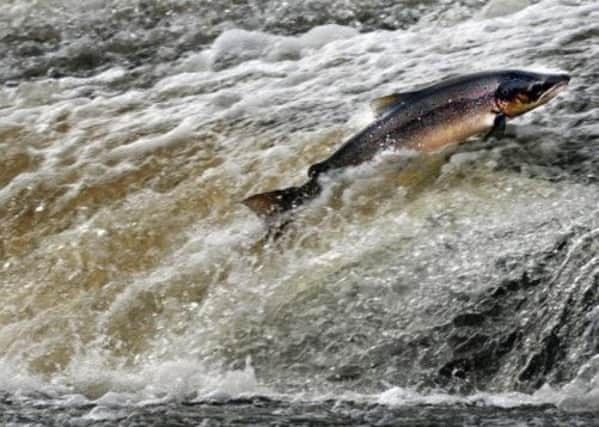Salmon board hires new chief exec to halt decline


• Chris Conroy appointed chief executive of Ness District Salmon Fishery Board in effort to reverse decline of salmon stocks
• Atlantic salmon numbers in the River Ness catchment system have suffered a severe drop
Advertisement
Hide AdAdvertisement
Hide AdChris Conroy, currently superintendent and biologist for the River Naver Fisheries, has been appointed the new chief executive of the Ness District Salmon Fishery Board and will move from Sutherland to Inverness to take up his new post on 1 August.
The fisheries management specialist has been tasked with driving forward an action plan aimed at reversing the decline in catches, which has included a 1,400 per cent plunge in the stock of Atlantic salmon over a generation in the River Garry.
The board see his role as pivotal to enhancing the salmon fishing of the Ness and its catchment, which creates or underpins more than 1,000 jobs and is a valuable income generator to the Inverness and Great Glen economy.
He said: “It’s a fascinating challenge and I’m delighted at the opportunity. The Ness should be one of Scotland’s leading salmon rivers and I’m looking forward to getting to grips with the issues thrown up by recent research and delivering on a successful action plan.”
Board chairman Andrew Duncan, Inverness, said: ”We’ve spent the last two to three years researching the system and its problems then developing a strategy to counter them.
“Now it’s time to move forward with actions and we’re delighted to make a significant investment in appointing Chris, who will also be River Director as well as chief executive.”
Originally from Cheshire, Mr Conroy admits;”My father took me fishing and when I was eight years old I met a water bailiff and knew that working on a river was what I wanted to do with my life.”
He gained an Applied Biology degree at John Moore’s University, Liverpool, then worked with the Environment Agency in their National Fisheries Laboratory and in a science role within the Thames Tideway team.
Advertisement
Hide AdAdvertisement
Hide AdMr Conroy then studied at King’s College, London, securing a Masters degree in Aquatic Resource Management.
Later he worked as the Fisheries Technical Specialist and Biodiversity Team Leader in the Kent area of the Environment Agency.
Following a period as an environmental consultant, he was appointed to the River Naver Fisheries post four years ago, where he has coupled fisheries science and management with enforcement in the Naver’s 20 miles and six beats of prime angling.
This first full-time appointment follows work the board commissioned from Dr Eric Verspoor, of the Rivers and Lochs Institute of the University of the Highlands and Islands, whose findings present evidence that a salmon stock restoration programme needs to be developed.
Dr Verspoor traces stocks decline to a mix of loss of habitat due to flooding, increase in predators such as pike, environmental changes due to new forestry, interaction with escaped farm salmon, and poaching.
He urges identification of the biological and engineering scope for improved habitat and sources of broodstock, with expert ongoing monitoring.
The Ness District Salmon Fishery Board is an association of proprietors of salmon fisheries within the district and its role is to protect or improve the fisheries, increase salmon numbers and restock its waters.
The Board was established 150 years ago but its powers were amended by Parliament, most recently by the Scottish Parliament in 2003.